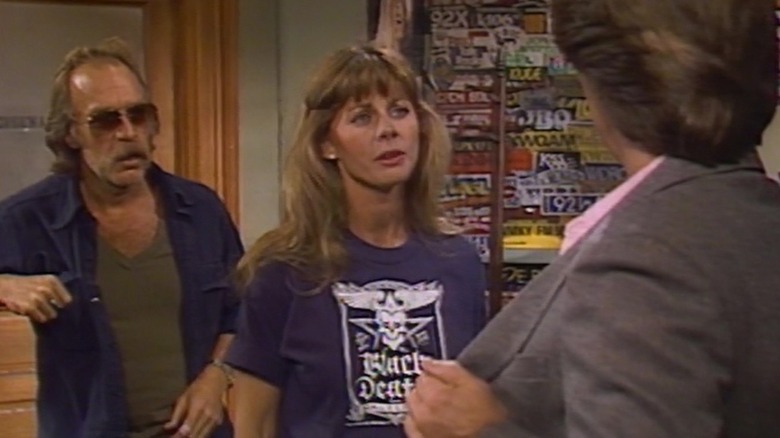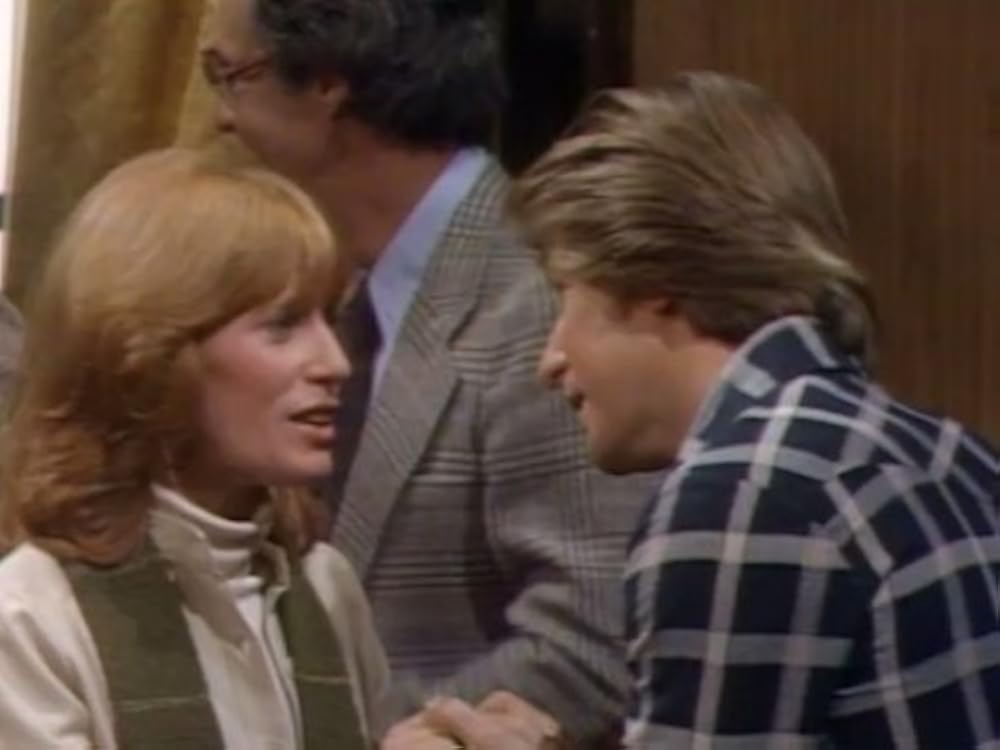A Detailed Article on the TV Series WKRP in Cincinnati
(With reference to the woman in the image)
WKRP in Cincinnati is a beloved American sitcom that originally aired from 1978 to 1982. Created by Hugh Wilson, the series centers on a fictional radio station in Cincinnati, Ohio, and follows the eccentric staff as they attempt to revitalize the station's poor ratings by shifting from a bland easy-listening format to rock ‘n’ roll. The show’s sharp wit, endearing characters, and timely cultural satire helped cement its status as a cult classic in television history.
The woman in the image above is most likely Jan Smithers, who played the soft-spoken but strong-willed character Bailey Quarters on the show. Bailey begins as a shy and reserved employee in the station’s billing department but grows into a competent and respected news reporter. Her character represented a subtle but powerful symbol of professional women navigating a male-dominated workplace in the late 1970s. Smithers’ portrayal brought warmth, intelligence, and quiet strength to the role, making Bailey a fan favorite and a progressive figure for the era.

WKRP in Cincinnati thrives on its ensemble cast, each bringing a unique flavor to the station's chaotic ecosystem. Among the standout characters are Andy Travis (Gary Sandy), the earnest program director trying to bring order to the station; Dr. Johnny Fever (Howard Hesseman), the laid-back, rebellious DJ; Venus Flytrap (Tim Reid), the cool and insightful night DJ; and Herb Tarlek (Frank Bonner), the loud, tasteless sales manager in polyester suits. Rounding out the cast are the charming but clueless receptionist Jennifer Marlowe (Loni Anderson), and the bumbling yet well-meaning station manager Arthur Carlson (Gordon Jump).
The show's writing was clever and grounded in reality. It addressed social and political issues with a deft touch — from censorship and payola scandals to race relations and gender politics — without sacrificing humor. One of its most iconic episodes, “Turkeys Away,” involving a disastrous Thanksgiving promotion, remains one of the most celebrated moments in sitcom history.

What set WKRP in Cincinnati apart was its balance between slapstick comedy and heartfelt moments. The characters, while exaggerated for humor, felt relatable and genuine. Viewers were drawn not only to the jokes but to the camaraderie and evolving relationships within the station.
Though the series had modest ratings during its original run, it developed a strong following in syndication. Its realistic depiction of radio station dynamics, paired with memorable rock music tracks (a licensing challenge for later DVD releases), made it resonate with fans long after its conclusion.

In conclusion, WKRP in Cincinnati is more than just a workplace comedy; it is a snapshot of American media, culture, and values in transition during the late 20th century. Jan Smithers' Bailey Quarters, as seen in the image, symbolizes the quiet yet impactful presence of women asserting their place in modern professional life. With its timeless humor and rich character dynamics, WKRP in Cincinnati remains a landmark in the golden age of television sitcoms.


